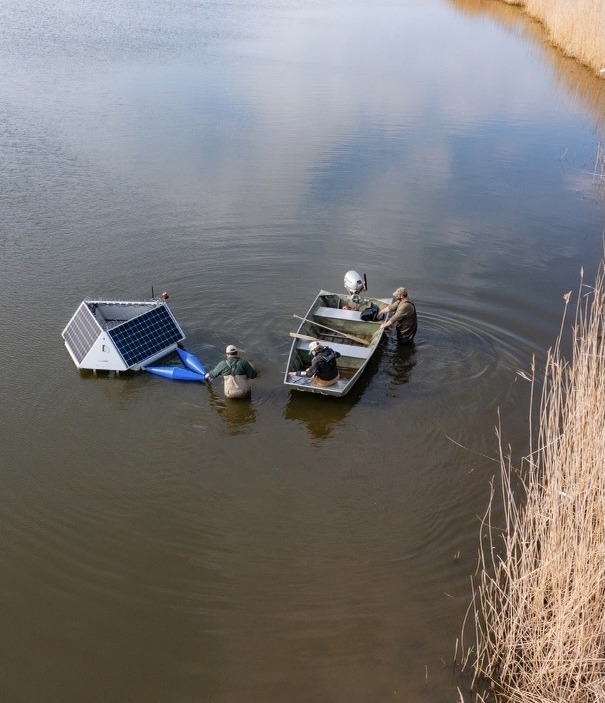A new collaboration for a long-standing problem
The New York State Department of Environmental Conservation (DEC), in partnership with the village of Southampton, announced a new research project that will evaluate the efficacy of MPC-Buoy systems to mitigate harmful algal blooms on Lake Agawam, in the village of Southampton. This research is part of the HABs Action Plan developed in 2020 by DEC for Lake Agawam. The LG Sonic technology has been deployed in April 2021.
Saving Lake Agawam
Lake Agawam is a 64-acre freshwater lake in Suffolk County. It has an average depth of 10 feet, and the volume of approximately 208 million gallons. Lake Agawam has received considerable attention by state agencies, NGOs, lake users, and other stakeholders due to its long history of documented harmful algal blooms in the lake. Samples were collected weekly from 2013 to 2019, when toxic blooms were present.
Expecting sunny skies, hoping for clear waters
State experts are working closely with the Lake Agawam community, and in collaboration with Stony Brook University. Together, they are set to study the effectiveness of ultrasonic devices on Lake Agawam throughout the summer of 2021. After the study, MPC-Buoys could be used for other water bodies that are contaminated with harmful algal blooms.
As summer season is soon to start, it presents the optimal conditions to evaluate the use of ultrasonic treatment for the long-term improvement of the lake’s water quality. Algal blooms are more likely to occur and become a problem when temperatures rise. Besides unpleasant tastes and odors, excessive algal blooms can seriously harm humans, pets, and aquatic organisms, and degrade water quality.
A green solution for green waters
MPC-Buoy is a floating, solar-powered system that combines continuous water quality monitoring, web-based software, and ultrasonic technology to effectively control algae in real-time. The MPC-Buoys emit ultrasonic waves that create a sound layer in the top layer of the water, impacting the buoyancy of algae cells. These cells sink to the deeper layers of the water column, where the algae cannot access sunlight anymore, and naturally die.
To date, MPC-Buoy systems have been successfully controlling harmful algal blooms in the states of Florida (FGCU), California (Vallecitos Water District), Georgia, New York (NYSDEC), Pennsylvania (American Water), Virginia, Minnesota (City of Minneapolis), Illinois, Indiana (NIPSCO), Colorado (Ramey Environmental Compliance), and Maryland. Industries in which LG Sonic is active include drinking water, wastewater, power generation, and oil and gas.
Source: LG-sonic


